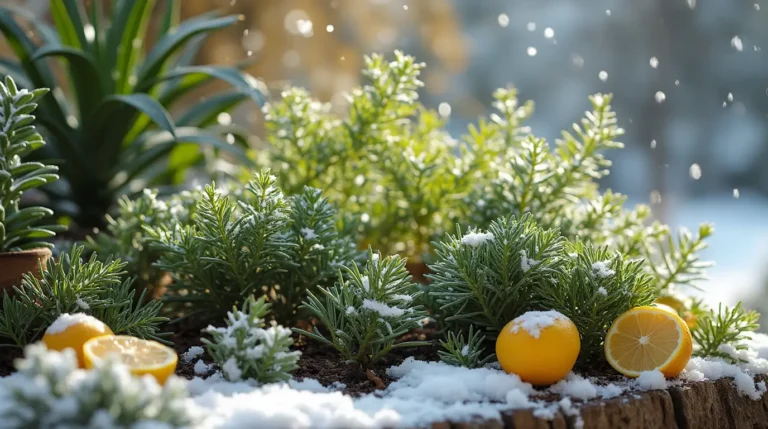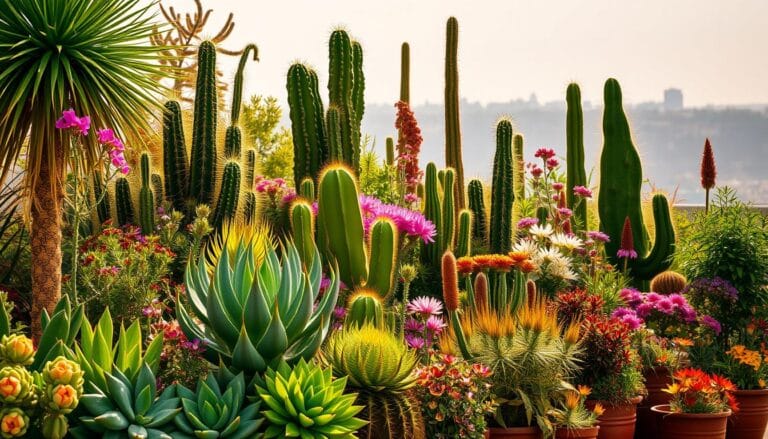Seeds in Green Hell: A Survivalist’s Planting Guide

Imagine walking through the Amazon rainforest, surrounded by green and sounds you’ve never heard before. It’s a challenge to find food and survive in this wild place. As a survivalist, I’ve learned how to grow seeds in this tough jungle.
This guide will help you understand the Amazon. You’ll learn about the best seeds and how to plant them at the right time. It’s perfect for anyone going on a wilderness trip or wanting a self-sustaining home.
Let’s start this adventure together. I’ll share my secrets for surviving and even thriving in the Green Hell. Get ready to find the keys to your self-reliance and resilience in the face of nature’s toughest challenges.
Table of Contents
Understanding Seeds in Green Hell’s Survival Basics
Exploring Green Hell’s lush but dangerous world means learning about seed growth. You need the right tools for seed collection and to know how climate affects planting. Getting these basics right is key to surviving in this wild place.
Essential Equipment for Seed Collection
When you head into the dense rainforest to collect seeds, you need the right gear. A strong knife or pruning shears are vital for picking seed pods without harming the plant. A mesh sieve or strainer helps separate seeds from chaff and debris. And, a waterproof container keeps your seeds dry on the way back to camp.
Basic Planting Requirements
To succeed in Green Hell’s tropical planting, you must understand soil and moisture needs. Many rainforest farming plants do well in well-drained, rich soil. Others like acidic soil. Planting seeds at the right depth and spacing is crucial for their growth.
Climate Considerations
Green Hell’s weather changes can be both a challenge and an opportunity. Knowing when the wet and dry seasons come helps plan your planting and harvesting. Also, knowing the temperature and humidity needs of your plants helps you adapt to the jungle’s unpredictable climate.
Learning about seed collection, planting, and adapting to climate will help you grow a successful wilderness agriculture in Green Hell. With the right knowledge and tools, the jungle can become a rich source of food and resources, helping you survive and thrive.
Native Edible Plants for Wilderness Agriculture
Exploring Green Hell’s lush landscapes can lead to finding edible native plants. These plants are not just food; they also show the jungle’s complex ecosystem. Growing these plants can provide a sustainable food source and help the environment.
The Cassava, also known as Yuca or Manioc, is a key plant. Its starchy roots are a main food source in many tropical areas. The leaves can be eaten like spinach, adding nutrients to your diet.
- The Acai Berry is known for its antioxidants and taste. These berries are nutritious and can be used in many recipes.
- The Breadfruit tree offers large, starchy fruits like potatoes. It also provides shade, making it great for your garden.
Look for the Moringa tree in Green Hell. Its leaves, pods, and seeds are full of vitamins, minerals, and protein. Adding Moringa to your diet can keep you healthy in the wild.
| Native Edible Plant | Nutritional Benefits | Cultivation Tips |
|---|---|---|
| Cassava (Yuca or Manioc) | High in carbohydrates, provides energy | Requires well-drained soil, tolerates drought |
| Acai Berry | Rich in antioxidants, vitamins, and minerals | Prefers humid, tropical environments |
| Breadfruit | Starchy fruit, high in fiber and nutrients | Grows best in warm, humid climates |
| Moringa | Leaves, pods, and seeds are highly nutritious | Tolerates a wide range of soil conditions |
By growing these plants, you’ll have more food and help the jungle’s balance. Green Hell’s bounty can nourish you and deepen your connection to nature.
Seasonal Planting Calendar for Tropical Environments
Green Hell’s lush landscapes need careful planning for planting seeds. Knowing the wet and dry seasons helps ensure successful harvests all year.
Wet Season Planting Guide
In the wet season, plant fast-growing crops that love water. Tropical planting includes leafy greens, root veggies, and some cereals. Watch out for waterlogging and use good drainage to avoid rot.
Dry Season Strategies
When it’s dry, choose drought-resistant plants like legumes, tubers, and hardy herbs. Use mulching and smart irrigation to help your seeds in green hell make it through dry times.
Harvest Timing Tips
- Keep an eye on your crops’ growth, as tropical weather speeds it up.
- Harvest before heavy rains or long dry spells hit, to keep quality and yield high.
- Learn each plant’s growth cycle to harvest at the best time for high productivity.
By matching planting and harvesting with the tropical seasons, you’ll grow a strong, self-sustaining tropical planting system. It will give you food all year.
Emergency Food Sources from Wild Seeds
In the harsh wilderness of Green Hell, finding food is key to survival. Wild seeds are a crucial resource, thanks to the tropical environment. Learning to identify, prepare, and eat these seeds can keep you fed in tough times.
The velvet bean, or Mucuna pruriens, is a valuable find. While the farmed version is useful, the wild type, or “cowitch,” is tricky. Its pods have stinging hairs that can irritate for over 30 minutes. But, with the right steps, you can make it a safe food source.
- Carefully remove the pods and soak them in water to neutralize the irritants.
- Thoroughly cook the beans to eliminate any remaining toxins before consumption.
- Explore other wild seeds, such as those from the Echinacea and Black-eyed Susan plants, which are less prone to pest damage and more palatable.
Knowing about wild seeds can boost your survival chances in Green Hell. With the right steps and caution, these natural foods can be lifesavers in the wild.
| Seed Source | Preparation | Nutritional Value |
|---|---|---|
| Velvet Bean (Mucuna pruriens) | Soak to remove stinging hairs, cook thoroughly | High in protein, fiber, and various minerals |
| Echinacea | Collect seeds, roast or grind into flour | Rich in antioxidants, vitamins, and minerals |
| Black-eyed Susan | Harvest seeds, toast or add to soups | Provide essential fatty acids and protein |
“In the unforgiving wilderness, wild seeds can mean the difference between life and death. Mastering their identification, preparation, and consumption is a critical skill for any true survivalist.”
Soil Preparation and Natural Fertilization Methods
In the jungle, making soil rich and using natural fertilizers is key for wilderness agriculture and off-grid cultivation. This includes composting and managing soil pH. These steps are vital for growing healthy jungle gardens.
Composting in the Jungle
Composting is a basic step for a fertile start in jungle gardening. Collect leaves, twigs, and other plant parts to make compost. This natural process turns them into a dark, nutrient-rich humus that feeds your plants.
Natural Nutrient Sources
- Worm castings, known as “black gold,” are full of nutrients for your plants.
- Organic amendments like bone meal, blood meal, kelp meal, and bat guano boost soil nutrients.
- Adding compost or organic matter on top keeps your soil healthy all season.
pH Balance Management
Keeping your jungle soil’s pH balanced is key for plant growth. Aim for a pH of 6.0 to 7.0, best for many wilderness agriculture crops. Test your soil often and use natural pH balancers like lime or sulfur to keep it right.
| Organic Soil Ingredient | Benefits |
|---|---|
| Compost | Rich in nutrients and organic matter |
| Worm Castings | Nutrient-rich for plant growth |
| Bone Meal | Increases phosphorus and calcium in soil |
| Blood Meal | High in nitrogen for soil |
| Kelp Meal | Provides trace minerals and growth hormones |
| Bat Guano | Concentrated in nitrogen, phosphorus, and potassium |
Using these soil preparation and natural fertilization methods, you can make a lush, nutrient-rich space for your off-grid cultivation and wilderness agriculture in the jungle.
Protecting Your Seeds from Jungle Threats
Growing a garden in the Green Hell’s lush but tough environment needs careful planning. You must protect your survival seeds from pests, diseases, and weather changes. With the right strategies, you can keep your seeds safe and harvest plenty.
Pest Management in the Jungle
The Green Hell’s dense foliage and warm, humid air attract many pests. To fight these, use physical barriers, natural repellents, and organic pest control. Place netting or cloches over your plants and try essential oils or companion planting to keep pests away.
Combating Diseases and Pathogens
The jungle’s moist air can spread plant diseases quickly. Watch your plants closely and act fast if you see problems. Use organic fungicides like copper solutions or beneficial microbes to fight fungal and bacterial diseases.
Weatherproofing Your Survival Seeds
Tropical weather can be hard to predict and affect your seed growth. Use raised beds, shade, and good irrigation to protect your plants. Keep an eye on the weather and adjust your plans as needed.
By tackling the Green Hell’s challenges, you can keep your survival seeds safe. This ensures a steady food supply. With smart planning and a proactive attitude, you can succeed in this tough but rewarding environment.

| Threat | Protective Measures |
|---|---|
| Pests | Physical barriers, natural repellents, organic pest control |
| Diseases and Pathogens | Organic fungicides, beneficial microorganisms |
| Unpredictable Weather | Raised beds, shade structures, efficient irrigation |
Sustainable Harvesting and Seed Storage
Learning to grow seeds in green hell is more than just planting. It’s about harvesting and storing them right. Keeping your survival seeds alive is key to a lasting food supply.
Traditional Preservation Methods
Indigenous groups in tropical areas have known how to keep seeds in green hell safe for ages. They use sun-drying, smoke-curing, fermentation, and wax-sealing. These old ways can teach you how to grow these tough plants off the grid.
Long-term Storage Solutions
Modern ways can help keep your survival seeds fresh longer. Use airtight containers, desiccants, and cool, dark places. Look into new ideas like vacuum-sealing to keep your seeds good for planting later.
Germination Testing
It’s important to check how well your seeds in green hell grow. Simple tests can show if your seeds are still good. This helps you keep your seed bank strong for future crops.
Using green methods to harvest, storing seeds in many ways, and testing them often are crucial. These steps will help your off-grid garden grow strong. Learning these seed-saving skills will help you survive and even thrive in tough places, keeping you fed and self-sufficient.
Off-Grid Cultivation Techniques
Off-grid cultivation techniques are key for gardening in the “Green Hell”. They include vertical gardening and hydroponics. These methods help you grow food in tough tropical places.
Vertical gardening stacks beds to use space well. It creates a jungle oasis. This method saves space and protects crops from harsh weather.
Hydroponics grows plants in water, not soil. It’s great for poor soil or little land. This method is perfect for jungle areas with tough growing conditions.
Other methods like aquaponics, aeroponics, and permaculture also work well. They help you succeed in jungle gardening. These techniques make off-grid gardening rewarding and challenging.
| Cultivation Technique | Advantages | Considerations |
|---|---|---|
| Vertical Gardening |
|
|
| Hydroponics |
|
|
| Aquaponics |
|
|

Using these off-grid techniques, you can thrive in the “Green Hell”. Whether you choose vertical gardening, hydroponics, or other methods, adapt to the jungle. These methods can transform your gardening in the wilderness.
Medical and Therapeutic Plants Worth Growing
Exploring Green Hell means more than just finding food. It’s also about discovering plants that can heal. These plants are key to survival, offering relief and healing in the jungle.
Natural Remedies
Green Hell is full of plants with healing powers. Turmeric fights inflammation, while chamomile calms the mind. These plants can turn your survival garden into a healing oasis.
Essential Medicinal Seeds
Having medicinal seeds is crucial for survival. Seeds from plants like valerian, echinacea, and milk thistle are vital. They provide healing compounds even when plants are scarce.
| Medicinal Plant | Therapeutic Uses | Planting Considerations |
|---|---|---|
| Turmeric (Curcuma longa) | Anti-inflammatory, antioxidant, pain relief | Thrives in warm, humid climates with well-drained soil |
| Chamomile (Matricaria chamomilla) | Calming, anti-anxiety, sleep aid | Requires full sun and well-drained soil |
| Valerian (Valeriana officinalis) | Sedative, anti-anxiety, sleep aid | Prefers cool, moist environments with partial shade |
Adding these medicinal plants and seeds to your garden is a smart move. They offer a wealth of healing resources in Green Hell’s harsh environment.
Conclusion: Mastering Survival Through Strategic Planting
“Seeds in Green Hell: A Survivalist’s Planting Guide” has shown you how to survive in tough wilderness. You now know how to use seeds to your advantage. This includes the right tools, how to plant, and when to do it in tropical areas.
This guide has also taught you about native plants, emergency food, and natural fertilizers. You can now protect your seeds from dangers in the jungle. You also know how to harvest and store food sustainably. Plus, you’ve learned about growing food without electricity and the health benefits of some plants.
Use what you’ve learned from this guide on your next wilderness trip. With careful planning and a good understanding of your surroundings, you can survive and even thrive in Green Hell. Start your survival journey with the knowledge and strategies from this guide.
FAQ
What essential equipment is needed for seed collection in Green Hell?
What are the basic planting requirements for seeds in Green Hell?
How do climate factors affect plant growth in the Green Hell environment?
What are some of the native edible plants that can be cultivated in Green Hell?
How can I create a planting calendar tailored to the tropical climate of Green Hell?
What are some emergency food options derived from wild seeds in Green Hell?
How can I enrich and maintain the soil in the Green Hell jungle environment?
What threats to seeds and crops should I be aware of in Green Hell, and how can I protect them?
What seed preservation and storage methods are best suited for the Green Hell environment?
What off-grid cultivation techniques can I use to maximize food production in Green Hell?
What medicinal and therapeutic plants are worth growing in a Green Hell survival garden?
Source Links
- Hell and Other Terrible Things that Might Happen in the Future – Terrain.org – https://www.terrain.org/2024/fiction/hell-and-other-terrible-things/
- PDF – https://upeace.org/wp-content/uploads/2024/08/Fernandez-The-Shimon-Peres-legacy-on-peace-2024.pdf
- LibGuides: Book Clubs and Book Suggestions: People Magazine – https://libguides.freeportlibrary.info/BookClubsandBookSuggestions/People
- Grow Milkweed From Seed – https://www.mrsdavidsgardenseeds.com/grow-milkweed-from-seed.html
- Swimming in Mud in the Fifth Circle of Hell: The Forty-Sixth Newsletter (2024) – https://thetricontinental.org/newsletterissue/far-right-trump/
- Forest Seeds – https://cairnrpg.com/second-edition/wardens-guide/forest-seeds/
- Klamath-Siskiyou Native Seeds, Author at Klamath Siskiyou Native Seeds – Page 2 of 10 – https://klamathsiskiyouseeds.com/author/klamathsiskiyouseeds/page/2/
- Plantings for the Piedmont – The Piedmont Environmental Council – https://www.pecva.org/plantings-for-the-piedmont/
- Resilient Plants for Hardy Hellstrips – https://www.thisoldhouse.com/gardening/21017762/resilient-plants-for-hardy-hellstrips
- The {Farmer} & The Florist Interview: Grand Prismatic Seed – Floret Flowers – https://www.floretflowers.com/the-farmer-the-florist-interview-grand-prismatic-seed/
- In Search of Madness Beans | The Survival Gardener – https://thesurvivalgardener.com/in-search-of-madness-beans/
- Batch2 — A gardeners guide to woodland and wildlife gardening – https://www.fernsfeathers.ca/main-blog/tag/Batch2
- Organic Soil for Weed: Boost Your Cannabis Growth Naturally – https://blimburnseeds.com/blog/tips-and-tricks/organic-soil-for-weed/
- What Lies Beneath: Treasures in the Seed Bank – Humane Gardener – https://www.humanegardener.com/what-lies-beneath-treasures-in-the-seed-bank/
- Environmental Sensing Is Here, Tracking Everything from Forest Fires to Threatened Species – https://www.wired.com/story/environmental-sensing-is-here-tracking-everything-from-forest-fires-to-threatened-species/
- Home – https://hellbenderpress.org/
- Experiment: Nature – The Perfect Tower II – https://www.perfecttower2.com/wiki/Experiment:_Nature
- God Has A Green Thumb – New Life Gillette Church – https://newlifegillette.com/god-has-a-green-thumb/
- Spirits of Amazonia Game Mode – https://greenhell.fandom.com/wiki/Spirits_of_Amazonia_Game_Mode
- Expected Yield from SOG – https://www.420magazine.com/community/threads/expected-yield-from-sog.540912/
- Is It Actually Sinful for Christians to Use Herbs? – https://abetterwaytothrive.com/can-christianity-and-herbalism-mix/
- Blog – https://commodityconversations.com/wordpress2/category/blog/
- Ponderings on Games – https://ponderingsongames.com/
- Cultivator of Creation – https://forums.spacebattles.com/threads/cultivator-of-creation.1200215/
There are no reviews yet. Be the first one to write one.






